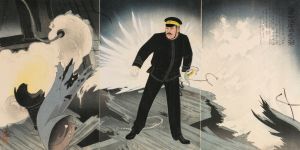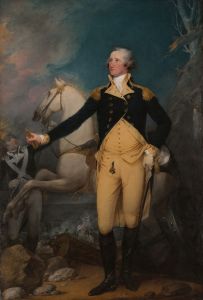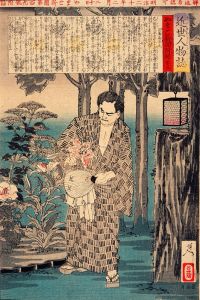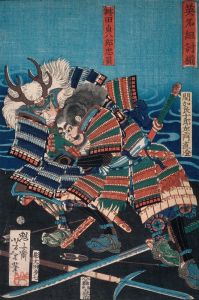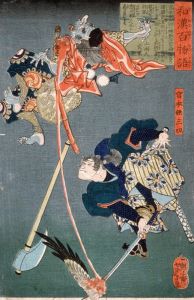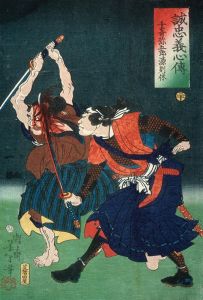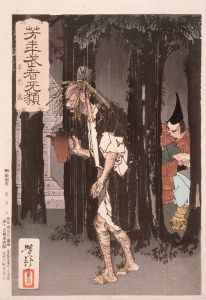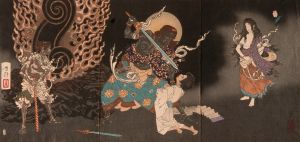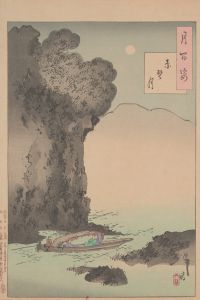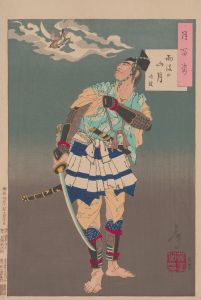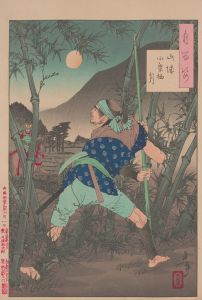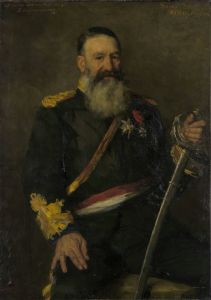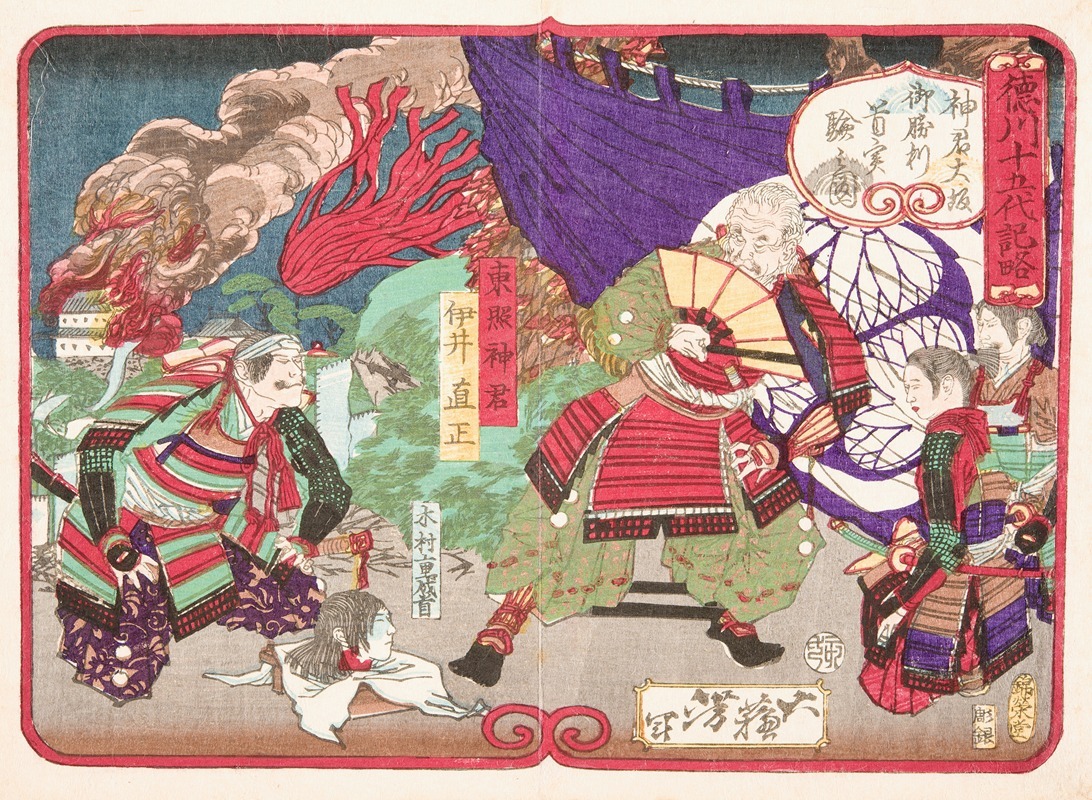
Tokugawa Ieyasu Examining the Head of Kimura Shigenari at the Battle of Osaka Castle
A hand-painted replica of Tsukioka Yoshitoshi’s masterpiece Tokugawa Ieyasu Examining the Head of Kimura Shigenari at the Battle of Osaka Castle, meticulously crafted by professional artists to capture the true essence of the original. Each piece is created with museum-quality canvas and rare mineral pigments, carefully painted by experienced artists with delicate brushstrokes and rich, layered colors to perfectly recreate the texture of the original artwork. Unlike machine-printed reproductions, this hand-painted version brings the painting to life, infused with the artist’s emotions and skill in every stroke. Whether for personal collection or home decoration, it instantly elevates the artistic atmosphere of any space.
Tsukioka Yoshitoshi, a prominent Japanese ukiyo-e artist of the late Edo and early Meiji periods, is renowned for his dynamic and often dramatic woodblock prints. One of his notable works is "Tokugawa Ieyasu Examining the Head of Kimura Shigenari at the Battle of Osaka Castle." This artwork is part of Yoshitoshi's series that delves into historical and legendary themes, capturing the intense and often brutal moments of Japan's past.
The print depicts a scene from the Siege of Osaka, a significant conflict that marked the end of the Warring States period in Japan. The siege consisted of two campaigns, the Winter Campaign of 1614 and the Summer Campaign of 1615, culminating in the fall of Osaka Castle and the destruction of the Toyotomi clan, a major rival to the Tokugawa shogunate. Tokugawa Ieyasu, the founder of the Tokugawa shogunate, played a crucial role in these events, consolidating his power and establishing a period of peace and stability in Japan that lasted for over 250 years.
In the artwork, Tokugawa Ieyasu is shown examining the severed head of Kimura Shigenari, a samurai who fought valiantly for the Toyotomi clan during the siege. Kimura Shigenari is remembered for his loyalty and bravery, and his death is emblematic of the tragic end of the Toyotomi resistance against the Tokugawa forces. The depiction of Ieyasu in this scene highlights the ruthless and decisive nature of his leadership, as well as the brutal realities of samurai warfare during this period.
Yoshitoshi's portrayal is characterized by its vivid detail and emotional intensity, capturing the somber and grim atmosphere of the aftermath of battle. The composition of the print, with its focus on the interaction between Ieyasu and the severed head, underscores the themes of power, loyalty, and the harsh consequences of war. Yoshitoshi's use of color and line work enhances the dramatic impact of the scene, drawing the viewer into the historical moment.
This print is part of Yoshitoshi's broader exploration of historical and legendary figures, where he often depicted scenes of violence and heroism, reflecting the turbulent times in which he lived. His works are noted for their psychological depth and the way they convey complex emotions and narratives through the medium of woodblock printing.
Yoshitoshi's "Tokugawa Ieyasu Examining the Head of Kimura Shigenari at the Battle of Osaka Castle" serves as a powerful reminder of the historical events that shaped Japan's history and the enduring legacy of the samurai ethos. Through his art, Yoshitoshi not only documented historical events but also provided insight into the cultural and social dynamics of his time, making his works valuable both as historical records and as artistic achievements.





